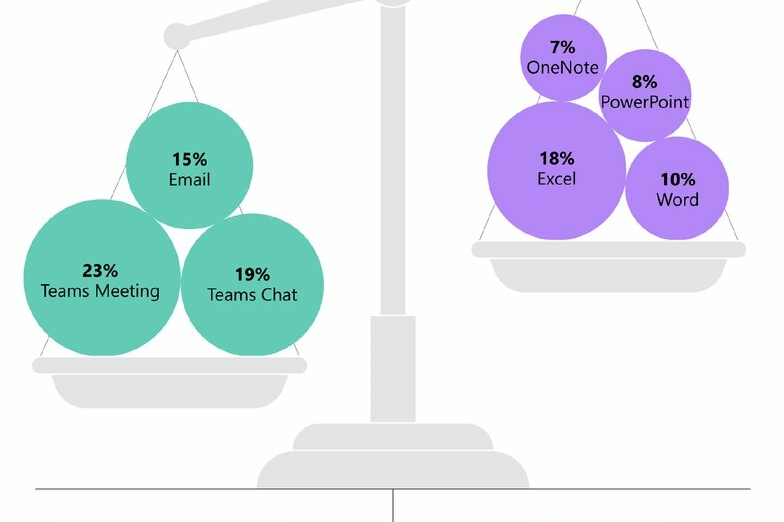Technology is the backbone of every company today. For the first time, Fast Company is recognizing the tech breakthroughs that promise to define the future of industries, from healthcare to agriculture to artificial intelligence. The Fast Company’s Next Big Thing in Tech List profiles 65 companies at the forefront of innovation and technological breakthrough. The List was featured in the Fast Company – Winter 2021/2022 Issue.
Here is the list of the top 65 honorees of the Fast Company’s Next Big Thing in Tech 2021:
Money
- Grabandgo – AI-Based cashierless checkout technology.
- Anchorage Digital
Digitalasset platform that employs biometric authentication, cryptographic user keys and hardware modules to offer secure storage for institutional investors interested in crypto. - Mastercard Contactless Payments Technology
American multinational financial services corporation Mastercard’s Enhanced Contactless Payments technology, adds a layer of protection to credit card transactions that is capable of withstanding quantum computing attack and the processing time is in milliseconds. - Orum
Machine learning enabled realtime payment, better prediction of the risk of failure when money is moved between banks. - Zest AI
Zest AI helps lenders make better credit decisions, through its Fairness Kit which uses adversarial de-biasing, a machine learning technique, to make consumer lending more equitable and accurate.
Smart Machines
- IBM for giving moore’s law new life
Moore’s law states that the number of transistors on a microchip doubles every two years. IBM designed a 2-nanometer chip that will let chipmakers fit up to 50 billion transistors into the space of a fingernail.
Use Case: Smartphones with 400% better battery life. - Azumo
Azumo displays enable longer battery life and devices that can be seen anywhere. Azumo provide indoor and outdoor readability without burning through battery life. - Diamond Foundry
Diamond Foundry’s synthetic diamond material technology could be used to replace 99% of a chip’s silicon wafer, allowing it stay cool and boosting both its performance and conductivity. - GelSight
With its elastomeric technology, GelSight is developing high-resolution, tactile sensors to enable complex object manipulation and performance of dexterous tasks.
-
This MIT spinout’s key product is Envise, a photonic AI accelerator that brings ultrahigh performance to applications such as neural networks and could help data centers radically reduce their carbon footprint.
- Monarch Electric Tractor
With a full camera and sensor suite, Monarch accurately maps and tags every crop on the farm. Easily access a historical record of your farm season after season. - MTEK
The MBrain system takes the software needed to run a modern-day factory and integrates it into a single system that can analyze each element of the manufacturing process to make it more efficient. - SambaNova
Created by Stanford professors for training large AI models through their Reconfigurable Dataflow Architecture. - Skylo
Skylo built an IoT platform that provides satellite connectivity to sensors located on everything from tractors to pipelines to fishing boats out at sea. - Tactile Mobility
By utilizing in-car systems, Tactile Mobility Vehicle DNA software enable vehicles to literally “feel” the road, and utilize the vehicle-road dynamics into a much better safer, and enjoyable driving experience.
Sustainability
- Upside Foods for eliminating the need for livestock at the molecular level
Upside Foods (formerly Memphis Meats) is developing meat and seafood grown from animal cells without the need for high-emissions livestock and at a cost that can eventually compete with conventional meat.
-
Anuvia
Anuvia turns food and farm waste into nutrients that can improve soil health and boost agricultural yield up to five times, while reducing the emissions from traditional fertilizer production by nearly a third. - Automatus
Using video cameras mounted to light poles, Automotus automates the process of charging drivers for parking. It also provides cities with valuable (and anonymized) insight about how their streets are being used.
- Bowery Farming
Vertical farming harnesses the power of technology to grow crops efficiently (stacked one on top of the other) in a controlled environment. Computer vision systems track and predict growth and automatically adjust conditions. -
Desktop Metals Forust uses ground-up wood scraps to 3D print new pieces that can be used in home goods, accent work, and architectural detailing.
- Farther Farms
By pasteurizing food with high-pressure carbon dioxide, Farther Farms is able to transform produce, dairy, and meat so that they can last months without refrigeration—especially useful in areas where limited cold storage leads to food waste.
Using iron and air instead of lithium, Form developed a prototype for an ultra-affordable battery that’s designed for longterm storage of renewable energy; the battery could be available as early as 2025.
Shingle maker GAF has pioneered a process that reclaims 90% of the materials from old asphalt roofing. Each new shingle now contains up to 15% recycled material, adding some welcome circularity to the roofing economy.
- GM
Debuting in the 2022 Hummer EV, the carmaker’s new Ultium battery technology allows for the same system to be used in all of its electric cars, reducing cost and smoothing the company’s transition to an all-electric fleet.
The startup’s low-cost, low-emissions recycling method is able to save up to 95% of the components in the lithium-ion batteries that power our phones and computers.
AI+Data
This Princeton University spin-off helps creators of medical devices, network appliances, and wearables, among other hardware, build AI applications that don’t require the kind of computing muscle, energy, and training data that can only be found in the cloud.
This electric propulsion system for planes has powered real zero-emission flights, taking aircraft as high as 8,000 feet on flights under 500 miles. The company expects FAA approval soon.
The company’s fungus-based Fine Mycelium material is made to replace leather in the fashion industry: It can be grown to customer specifications (including size and appearance), and is then tanned by leather workers.
When an electric vehicle is not in use, Nuvve’s technology lets the energy in its battery flow back into the grid, adding capacity to the system. It’s being piloted in idle school buses.
Wint’s Water Intelligence technology detects anomalies in water flows, allowing food and beverage plants to operate more efficiently and cut water consumption. Pepsi Co is rolling it out to five European sites.
- Sama and Orbisk
Food-waste startup Orbisk and data annotation company Sama built an AI tool that can scan a plate of leftover food and detect what’s going in the trash, allowing restaurants to adjust menus.
-
Turntide’s smart electric motors reduce both energy use and the need for repairs in refrigerators, air conditioners, and other motor-powered devices.
-
ADP
Payroll giant ADP’s DataCloud service now includes a diversity, equity, and inclusion dashboard that offers companies insights based on anonymized information from 30 million workers.
After identifying potential fraud on websites, Arkose Labs intercedes by deploying visual puzzles that are nearly impossible for algorithms to solve and take too long for human click farms to tackle.
The startup uses the same technology that secures digital transactions to eliminate the need for passwords. Users’ identities are tied to each device and cryptographically validated each time they log in.
With Keyavi’s API platform, individual pieces of data become self-aware and intelligent, reporting back to their owner about where the data is going and ensuring that only authorized users are accessing it.
The companies partnered to create ElectionGuard, an open-source system that keeps data encrypted even while it’s being processed, allowing people to check that their vote has been counted while keeping their ballot entirely secret.
PwC’s Bias Analyzer examines output data to help the firm’s clients spot subtle biases in automated decisionmaking systems that could impact processes ranging from insurance underwriting to clinical trials.
Spherex’s Greenlight technology mixes AI with human curation to allow production companies to adapt their content—and marketing strategies—to fit within a country’s specific societal or cultural guidelines.
Health
Bay Area-based Caption Health’s ultrasound uses AI to guide healthcare providers through the imaging process and offer preliminary interpretations of scans. This year, the company used the technology to monitor cardiac impacts from COVID-19.
Using the camera on a smartphone, Biospectal’s OptiBP app can record a user’s blood pressure through a fingertip.
Brightseed’s Forager platform leverages large-scale data processing and machine learning to get a deeper understanding of the compounds within plants to identify potential medical applications.
-
The company predicts health outcomes for hospital patients before they’re discharged so doctors can make care plans to prevent readmission.
- Microsoft and Adaptive Biotech
The tech giant teamed up with Adaptive Biotech to create Immune CODE, a database of immune responses to COVID-19, which they used to develop an affordable T cell test to detect past infection.
The company’s compact Tablo dialysis machine, which combines water purification and dialysate production (which clears impurities out of the blood), can be used in both treatment centers and at home, increasing access for patients.
Sherlock’s CRISPR-based COVID test—the first FDA-authorized use of the gene-editing tech—is sensitive and can deliver results in roughly one hour; the company is working on an at-home version that will be a handheld strip test, much like a pregnancy test.
The company created a minimally invasive interface that uses the brain’s electrical pulses to send information to a computer, allowing people with limited mobility to type and navigate the web.
Tivic’s handheld device reduces sinus pain by stimulating the trigeminal nerve, which reports pain and pressure in the face to the brain.
TruTag makes edible micro barcodes—which are scannable by a smartphone app—that can be printed on drugs to prevent fake medicines from making their way into the supply chain.
Experiences
U.K.-based Envisics developed a heads-up car display that uses augmented reality to project key information (directions, road hazards) into the driver’s field of vision. Proprietary materials change the density of light as it filters through the display, keeping the holographics bright and high-res, even in direct sunlight. The display will debut in next year’s Cadillac Lyriq.
Available in Lightroom and Camera Raw, Adobe’s Super Resolution uses machine learning to preserve detail when increasing a digital image’s resolution—which means photos can be printed up to four times larger without becoming blocky eyesores.
Combining virtual workstations, rendering capabilities, and data storage, Amazon Nimble Studio helps streamline and facilitate virtual collaboration for animated and special-effects heavy projects.
A postproduction platform for editing and distributing 3D and holographic videos, Arcturus’s HoloSuite can process and render enormous files of volumetric content quickly and with ease.
A videoconferencing service designed for hybrid teams, Around cuts out the echoes and feedback that occur when multiple people are on a call in the same room.
Used by Netflix, Amazon, and HBOMax, Audio Design Desk’s AI technology allows editors to seamlessly add sound effects to videos by choosing from a library of more than 30,000 royalty-free sounds.
Submit a photo of yourself and this augmented fashion store will superimpose an item of digital clothing onto your body, giving it a realistic looking fit. The company currently caters to influencers seeking fresh looks without having to buy real outfits.
HourOne’s photo realistic avatars can read text in 17 languages in voices that sound surprisingly human, turning written scripts into video presentations. Berlitz used the technology to generate 13,000 educational videos in three languages.
Kiswe transforms live events into global streaming experiences. Its technology allowed for a BTS concert to be simultaneously streamed to nearly 1 million devices in close to 200 countries, despite varying network capabilities in each location.
The wireless, handheld BLK2GO laser scanner uses lidar and panoramic imaging to create 3D maps of different environments, handy for designers, architects, and engineers.
Neurable packed each earpad of its Enten headphones with advanced signal processors that can measure the brain’s electrical activity. It uses this data to alert users when their brains need a break from work, among other features.
A transparent whiteboard with a built-in camera, Pathway’s eGlass captures a teacher’s face and notes in the same video, which can be streamed for students in the room and online.
This startup devised a new way to produce orbital rockets: by printing them with the world’s largest 3D printers. Using AI and robotics, it cranks them out in days, rather than the two-plus years required by conventional means.
Machine operators and technicians can access the information they need while on the job with Taqtile’s Manifest AR platform, which places instructions for managing complex industrial equipment directly in workers’ sight lines.
Tilt Five’s AR glasses use tiny projectors to beam video onto a specialized gaming table, which then reflects 3D imagery back to the wearer. The result is a lightweight headset with a wide field of view.
Source: Fast Company Winter 2021/2022 Issue
Need help with developing a digital strategy for your business? Get in touch.


